All products featured are independently chosen by us. However, SoundGuys may receive a commission on orders placed through its retail links. See our ethics statement.
Best cheap headphones
Published onDecember 12, 2024






Take SoundGuys’ quiz to find your best fit
If you’re a frequent visitor, then you already know that headphones come in a wide range of prices. Even headphones that are considered “cheap” can range from $20 to a few hundred. But what are the very best cheap headphones? As you might imagine, our picks for the best cheap headphones tend to offer more and better features, such as active noise canceling, as we go higher in price, but you might be surprised at the quality of the audio you get even at lower prices.
What's new?
- This article was updated on December 12, 2024, to correct outdated information.
- Looking for something more compact? Check out our list of the best cheap noise canceling earbuds.
The best cheap noise canceling headphones are the JLab JBuds Lux ANC
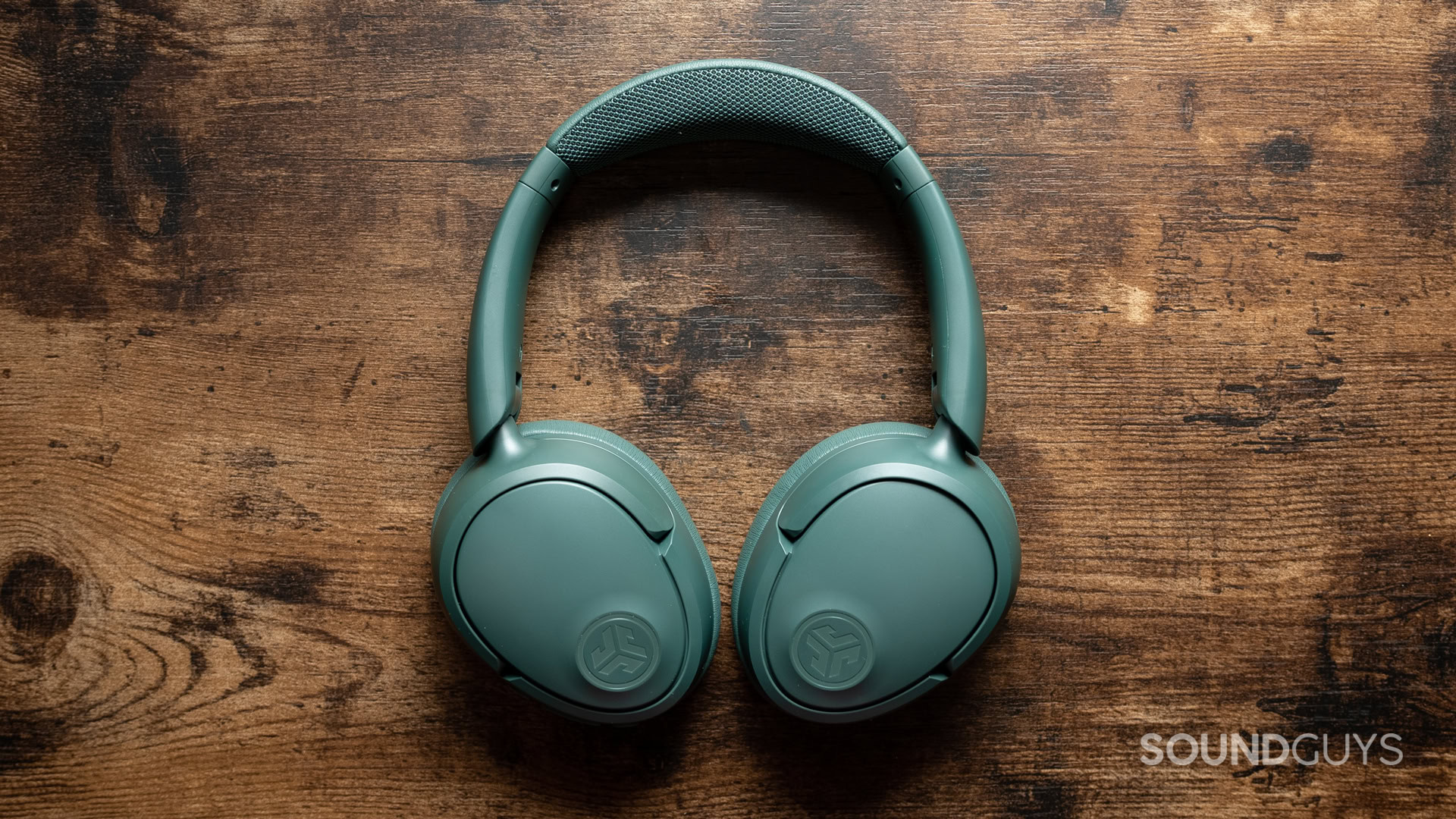
The JLab JBuds Lux ANC are an excellent choice for the best budget headphones under $100. For the affordable price of $79.99, they offer outstanding value by nailing the fundamentals.
These over-ear headphones have a comfortable fit with deep padding and a breathable headband. The build quality is decent, with the headphones able to fold up compactly for travel. While they lack an IP rating for water resistance, the sturdy construction can likely handle some sweat or light splashes.
As far as inexpensive ANC headphones go, the JLab JBuds Lux ANC are one of the best of 2024.
The JBuds Lux ANC provides effective active noise cancelation that significantly reduces ambient noise, especially in the higher frequencies. The sound quality is quite good, with an engaging bass-forward tuning that helps music cut through external noise. An app allows customizing the EQ as well. Battery life is excellent at over 44 hours per charge. USB-C charging with quick charge support is a premium feature at this price point — as is the audio over USB feature. Call quality is perfectly adequate for a Bluetooth headset in all but the windiest conditions.
Overall, the JLab JBuds Lux ANC punch well above their weight, offering tremendous bang for your buck in an affordable noise canceling headphone package. They are an outstanding budget option.


Loading chart ...
We’ve come to expect this frequency response from headphones for the commuting crowd. Even though it doesn’t conform to our preference target well, we know that headphones with widely different frequency responses can satisfy large numbers of people. A bass-heavy sound with plenty of high-end will appeal to someone listening for relatively short periods (i.e., less than a couple hours) and those who have to deal with lots of environmental noise.
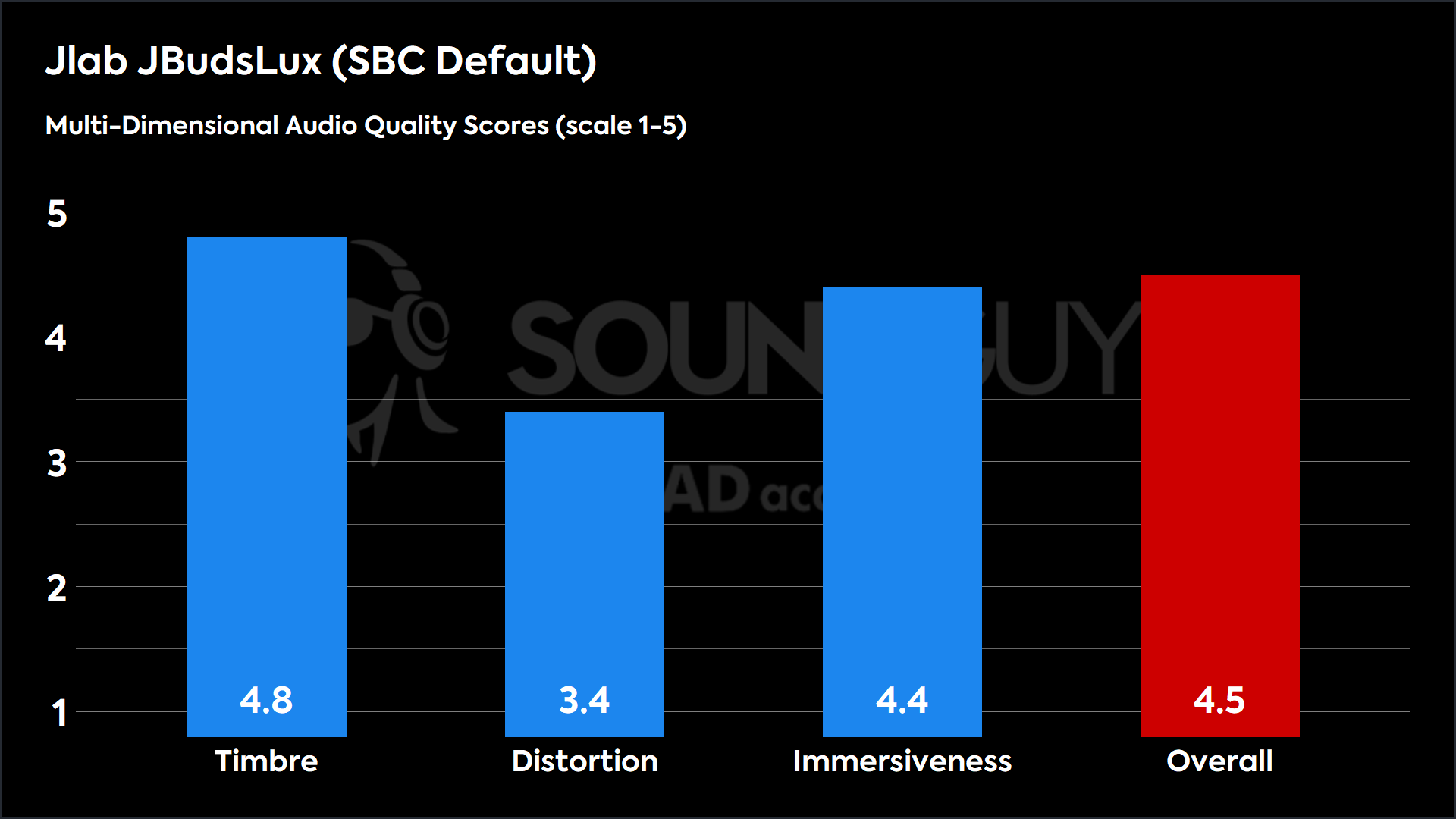
The Sony WH-CH520 covers the basics for less than $60
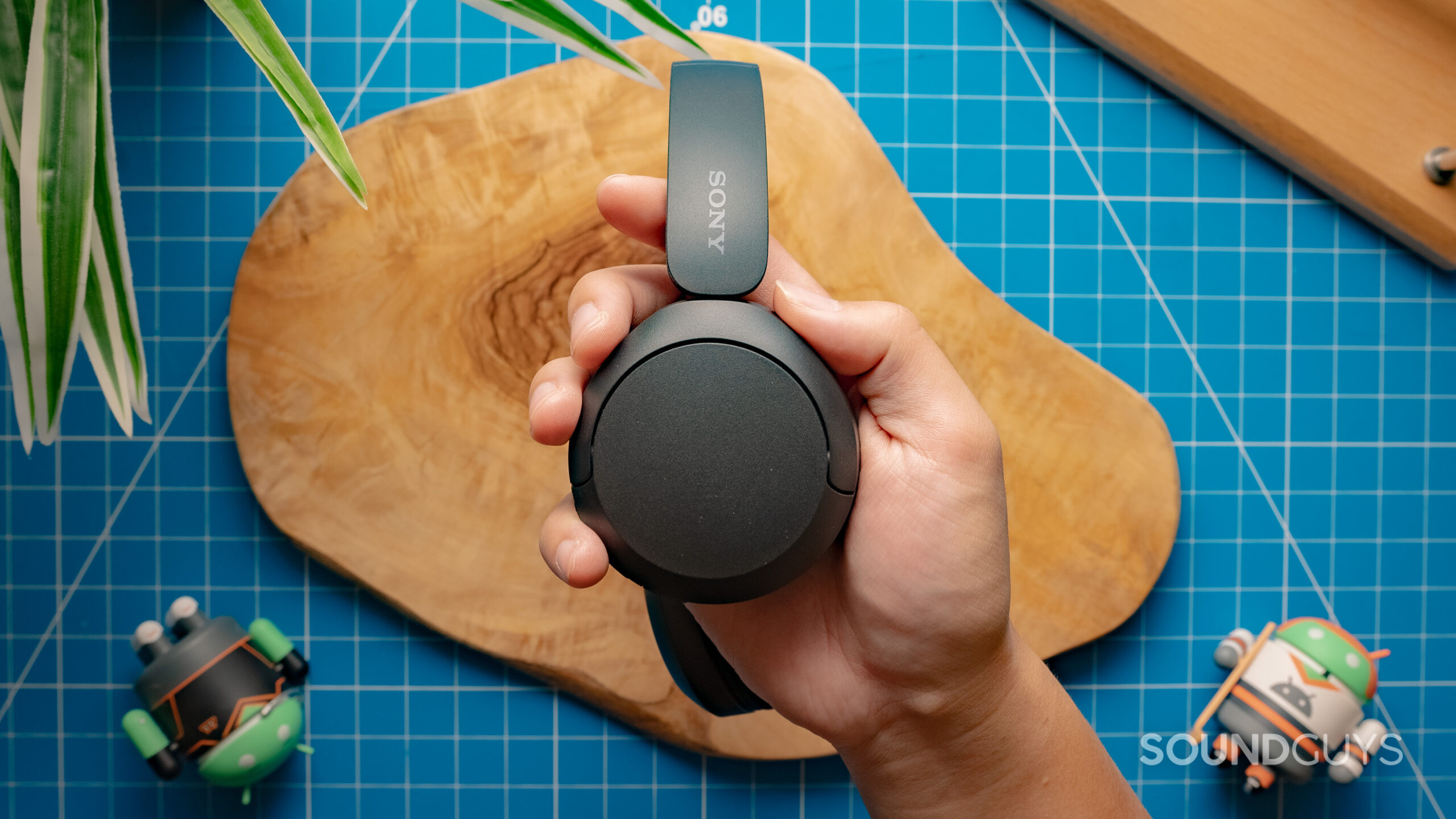
The Sony WH-CH520 headphones may not be the flashiest on the market, but they certainly carry their weight in terms of functionality. While they may lack premium codecs, they have Fast Pair and Bluetooth Multipoint, meaning you can quickly connect these headphones to various devices.
The WH-C520 is relatively comfortable and made of lightweight plastic. The soft ear pads are coated with a leather-like material, ensuring a snug fit without exerting too much pressure, especially given their on-ear design.
If you’re hoping for a safe brand to trust, there are few more attested than Sony.
However, when it comes to sound, they’re somewhat of a mixed bag. Assuming a proper fit, the audio quality is decent, with some emphasis on bass and mids. But be wary: any compromise in fit can affect the audio profile significantly, making some frequencies sound off-kilter. Still, for their price bracket, the WH-CH520 offers an acceptable sound experience for casual listeners.
In essence, if you’re in the market for straightforward, reliable headphones without all the bells and whistles, the Sony WH-CH520 might just be the right fit. They’re the audio equivalent of a dependable commuter car — not necessarily exciting, but they get the job done.

Loading chart ...
Assuming you get an ideal fit, the sound of the Sony WH-CH520 is not bad for a set of on-ears. However, it does suffer from bass and mids over-emphasis. While what we’d call “low mids” are overemphasized to a noticeable degree, the rest of this particular range suffers from under-emphasis, which will make some stringed instruments like the harp and acoustic guitar sound a bit strange, as the harmonics are going to be quieter than they should be.
If you were looking at the Sony WH-CH520 to handle phone calls, it’s capable enough. Below are standardized samples collected in simulated conditions so you can hear how they perform in these common scenarios.
Sony WH-CH520 microphone demo (Ideal conditions):
Sony WH-CH520 microphone demo (Office conditions):
Sony WH-CH520 microphone demo (Windy conditions):
How does the microphone sound to you?
The Audio-Technica ATH-M40x has great sound quality
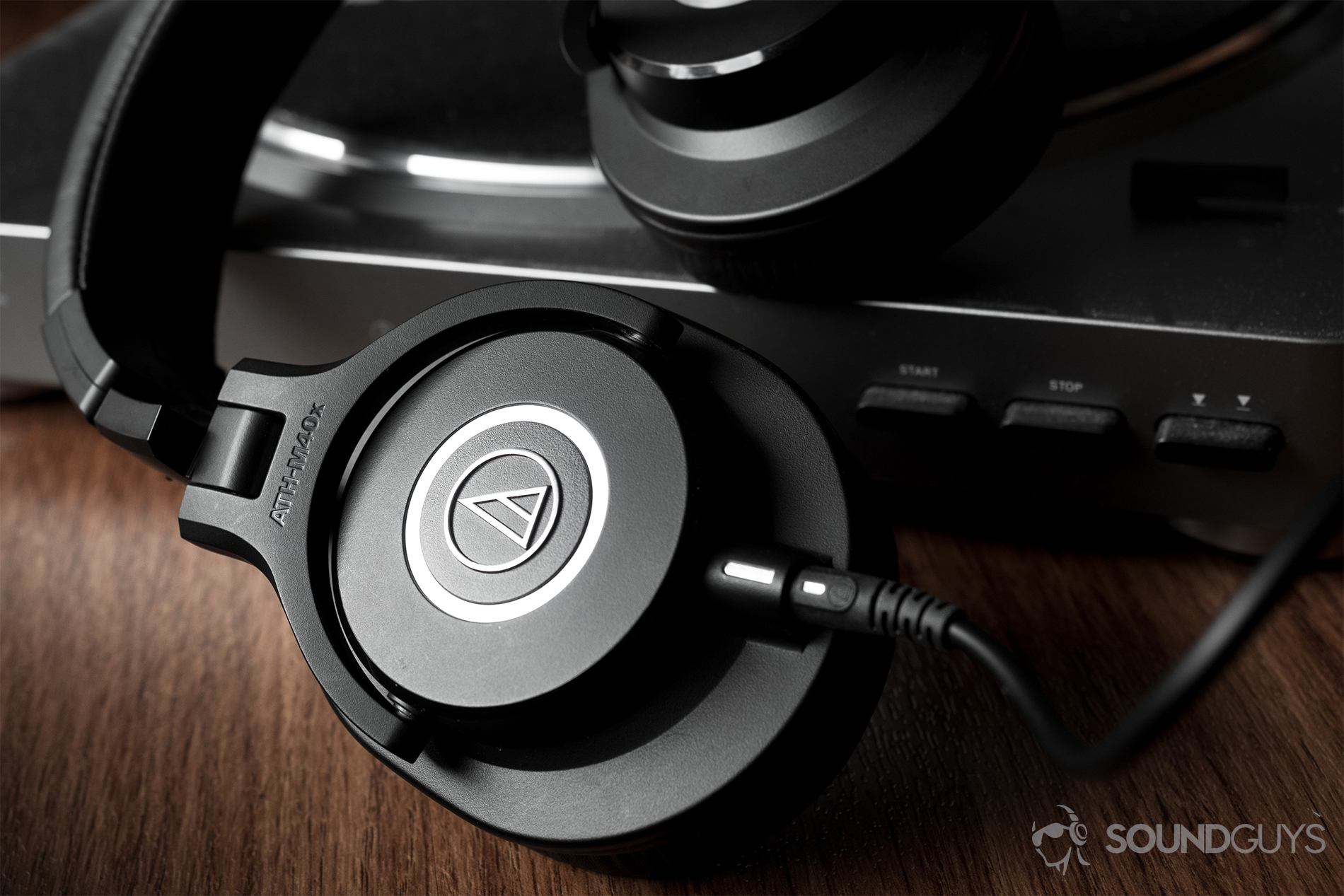
The Audio-Technica ATH-M40x is the overlooked little sibling of the ATH-M50x, but don’t knock the ATH-M40x out of the running. The ATH-M40x is designed with functionality in mind and costs less than $100. From enthusiasts to professionals, this pair of Audio-Technica headphones will satiate any hi-fi appetite.
The headband is comfortable enough for most people, though those with larger heads may have to stretch it out a bit manually first. There’s enough padding on the band and ear cups to make for comfortable, hours-long listening sessions. That said, you will notice some heat build-up after an hour, and some people prefer to air their ears out at that point.
As far as sound is concerned, the ATH-M40x has a less obvious difference between bass and midrange frequencies compared to the more expensive ATH-M50x. This kind of sound profile is good for all kinds of music and mixing alike. The treble response is more emphasized on the ATH-M40x than the ATH-M50x, but you can pretty easily EQ this from a desktop or mobile app.
Loading chart ...
The Audio-Technica ATH-M40x frequency response closely follows our studio headphone preference curve, with a bit of deviation in the sub-bass and midrange (200-600Hz). The sub-bass deviation is pretty minor, all things considered; if anything, you may want to EQ the headset to level out that midrange dip.
The Anker Soundcore Space One brings luxury features at a budget price
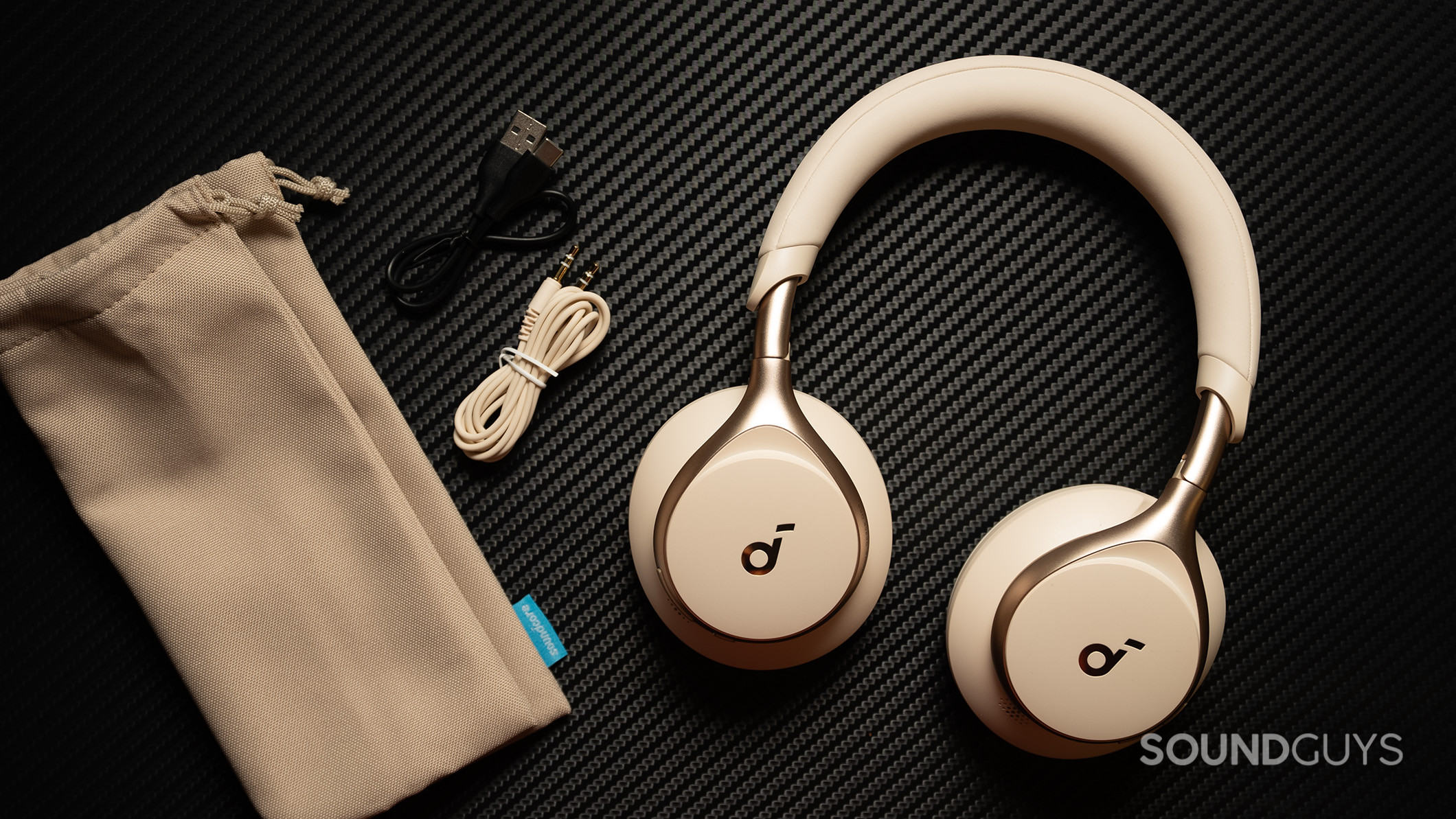
The Anker Soundcore Space One headphones offer high-end features at an affordable price, boasting strong noise cancelation, a companion app for customization, long battery life, and Bluetooth 5.3 with LDAC support. At $99.99, they provide excellent value, especially with their impressive 40-hour battery life with ANC on. However, they lack touch controls, have an over-emphasized bass and treble, and come with a cloth case rather than a hardcover. Their plastic build might feel less premium up close, but the design is lightweight and comfortable.
These headphones bring most of the same features of flagship competitors for a fraction of the price.
The Soundcore app enhances the experience with EQ customization, firmware updates, and more. With good connectivity options, including Bluetooth 5.3 and multipoint pairing, they lack USB audio but support fast charging. Additionally, the Anker Soundcore Space One headphones feature wear detection, automatically pausing your music when you remove them. Ideal for those seeking affordable noise canceling headphones without sacrificing features and sound quality, the Anker Soundcore Space One stands out for its balance of cost and performance.

Loading chart ...
In the chart above, you can see how the frequency response of the Anker Soundcore Space One compares to our headphone preference curve. The headphones have a U-shaped frequency response that amplifies low and high frequencies while attenuating mid-frequencies. This is common for consumer headphones as they create a more “exciting” sound at the cost of detail in mid-range sounds such as vocals, piano, and guitar.
With three microphones and an AI algorithm to isolate vocals, the Anker Soundcore Space One performs well when taking calls on the go. In our microphone demonstrations below, voices are clear.
Anker Soundcore Space One microphone demo (Ideal conditions):
The chart below shows how the sound of the Anker Soundcore Space One was assessed by the Multi-Dimensional Audio Quality Score (MDAQS) algorithm from HEAD Acoustics.
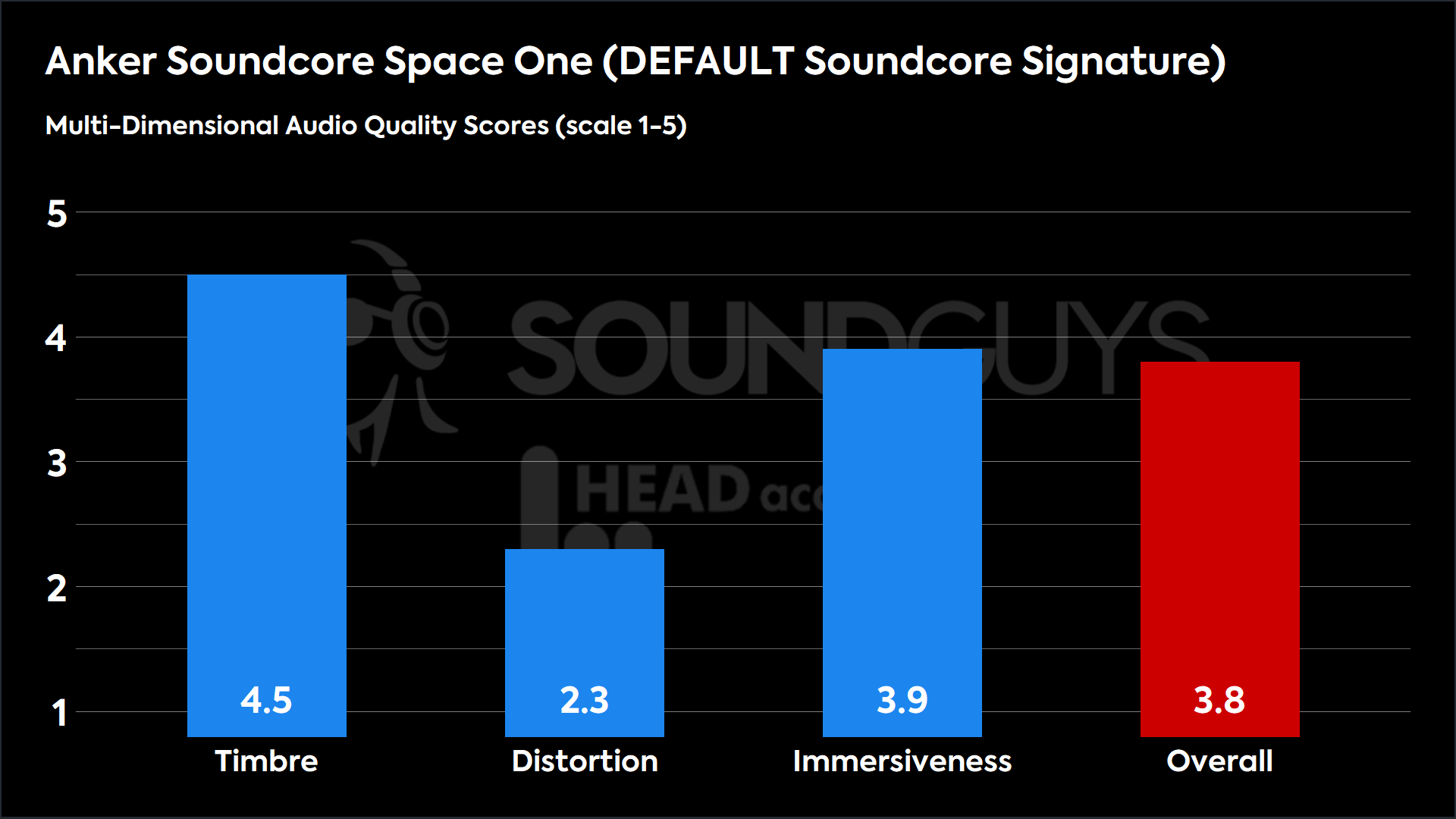
Anker Soundcore Life Q30 is the best bang for your buck
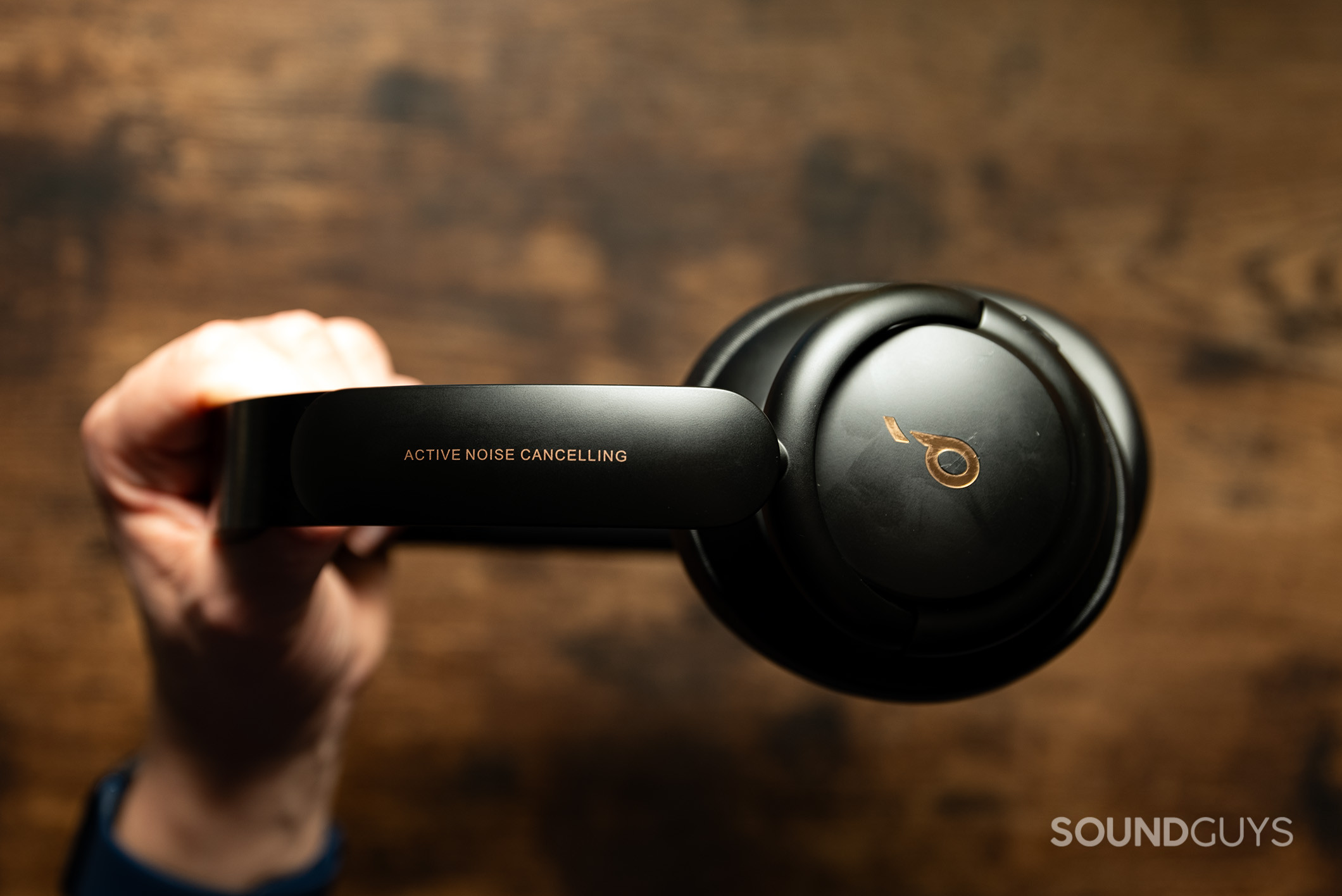
If you only have $80 to spend, the Anker Soundcore Life Q30 delivers good sound, active noise canceling, and a respectable 40-hour battery life for the price. Audiophiles aren’t going to like the way these sound, but then, this isn’t that type of product. Casual listeners will likely have fun listening to the overemphasized bass and highs, particularly for high-energy genres such as EDM. If you don’t like the default sound, you can easily adjust it with the companion app.
This is a versatile pair of headphones with the option of listening wired or wireless and including both ANC and transparency modes. Good over-ears don’t get much more affordable than this.

The chart below shows how the sound of the Anker Soundcore Life Q30 was assessed by the Multi-Dimensional Audio Quality Score (MDAQS) algorithm from HEAD Acoustics.
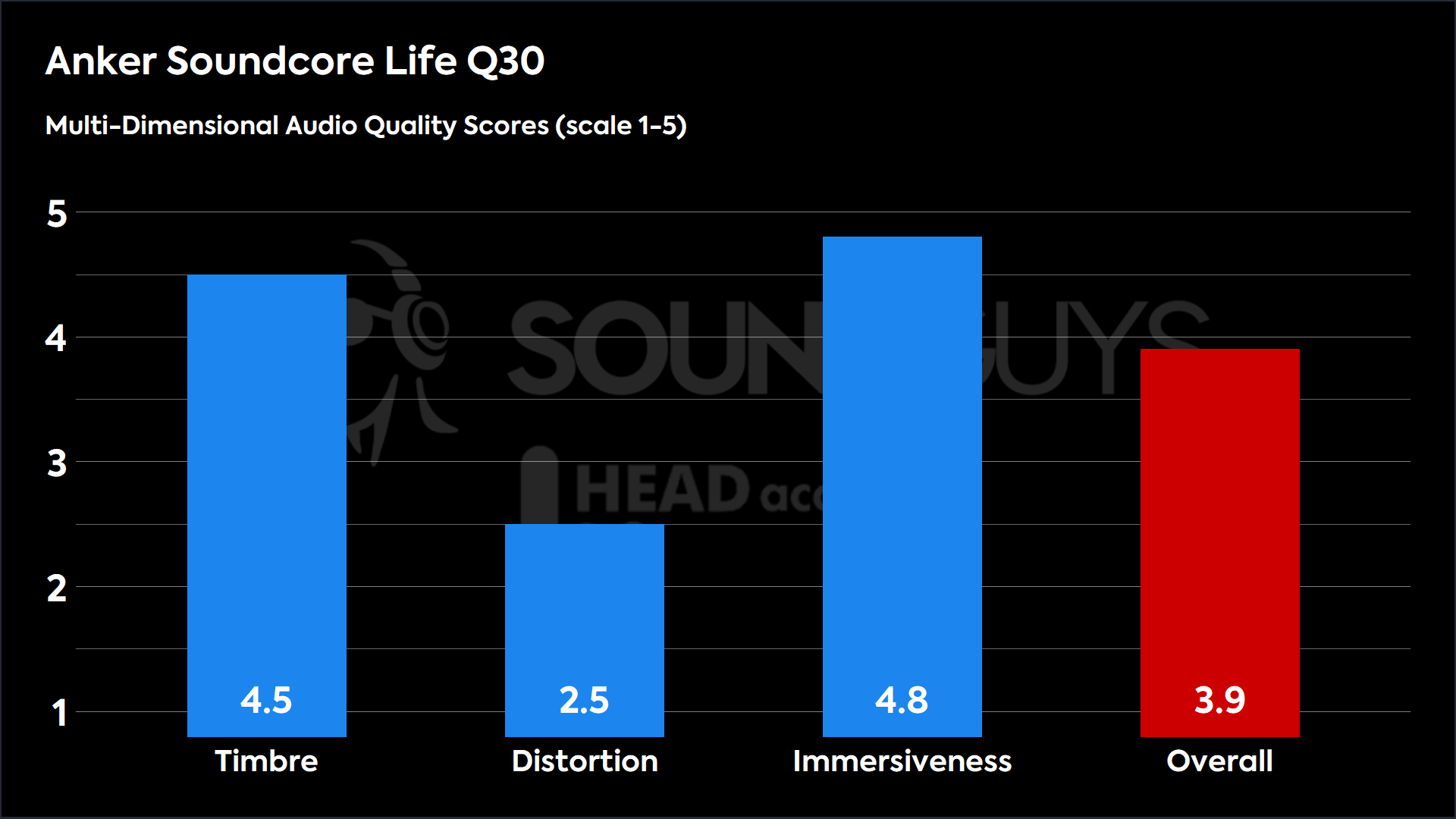
How does the Anker Soundcore Life Q30 compare to the Anker Soundcore Life Q35 and Life Q20?
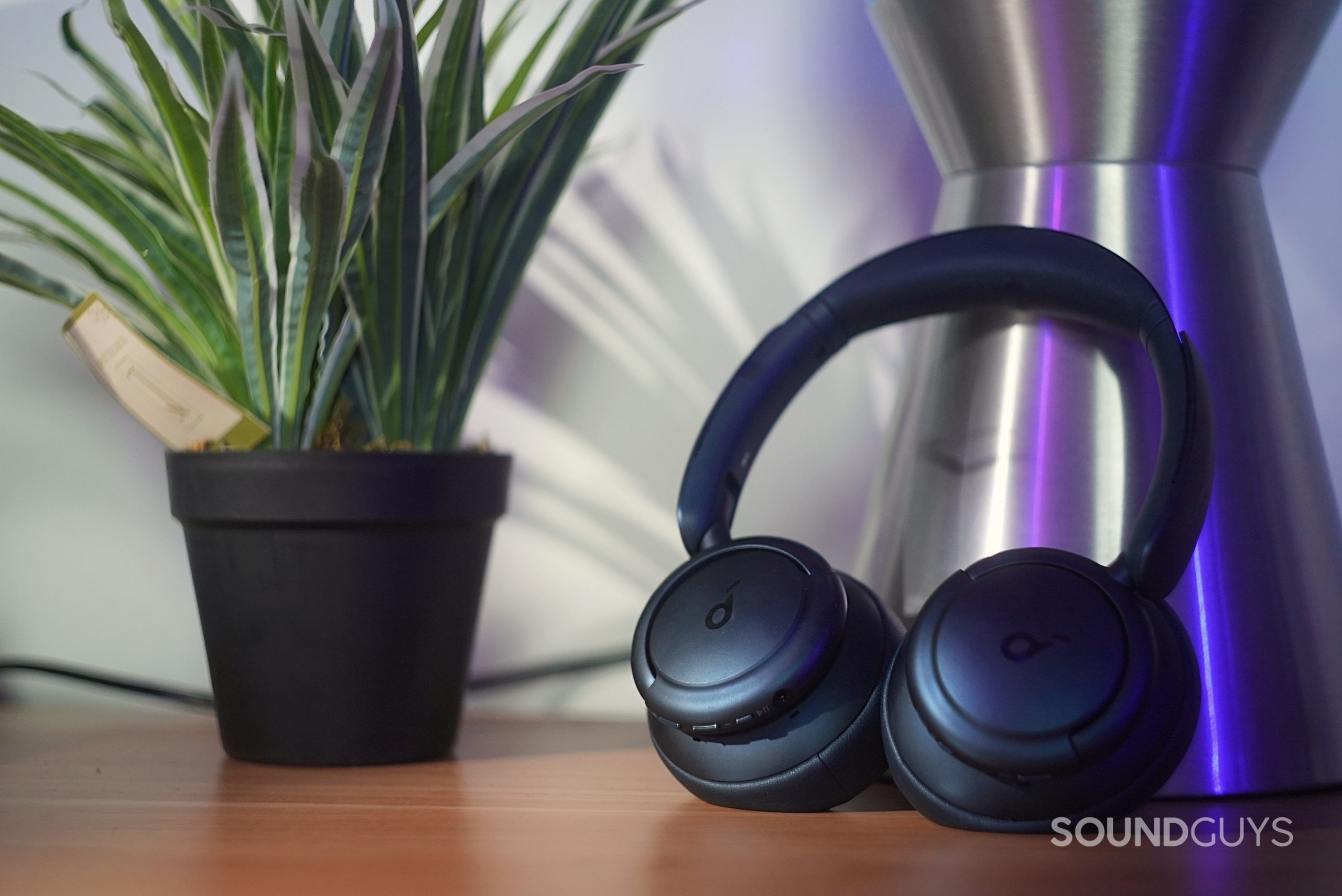
Regarding price, the Anker Soundcore Life Q30 slots between the Anker Soundcore Life Q20 and Anker Soundcore Life Q35. All three headphones perform similarly, with minor differences between the different models. The only drawbacks with the Anker Soundcore Life Q20 are that it doesn’t come with a hard case, doesn’t have Bluetooth multipoint, and uses micro-USB instead of USB-C to charge.
On the other hand, the more expensive Anker Soundcore Life Q35 brings the high bit-rate LDAC Bluetooth codec, smart wearing detection, and an airplane adapter. You’ll have to decide which, if any, of those features are worth the upgrade.


Should you get the 1MORE SonoFlow?
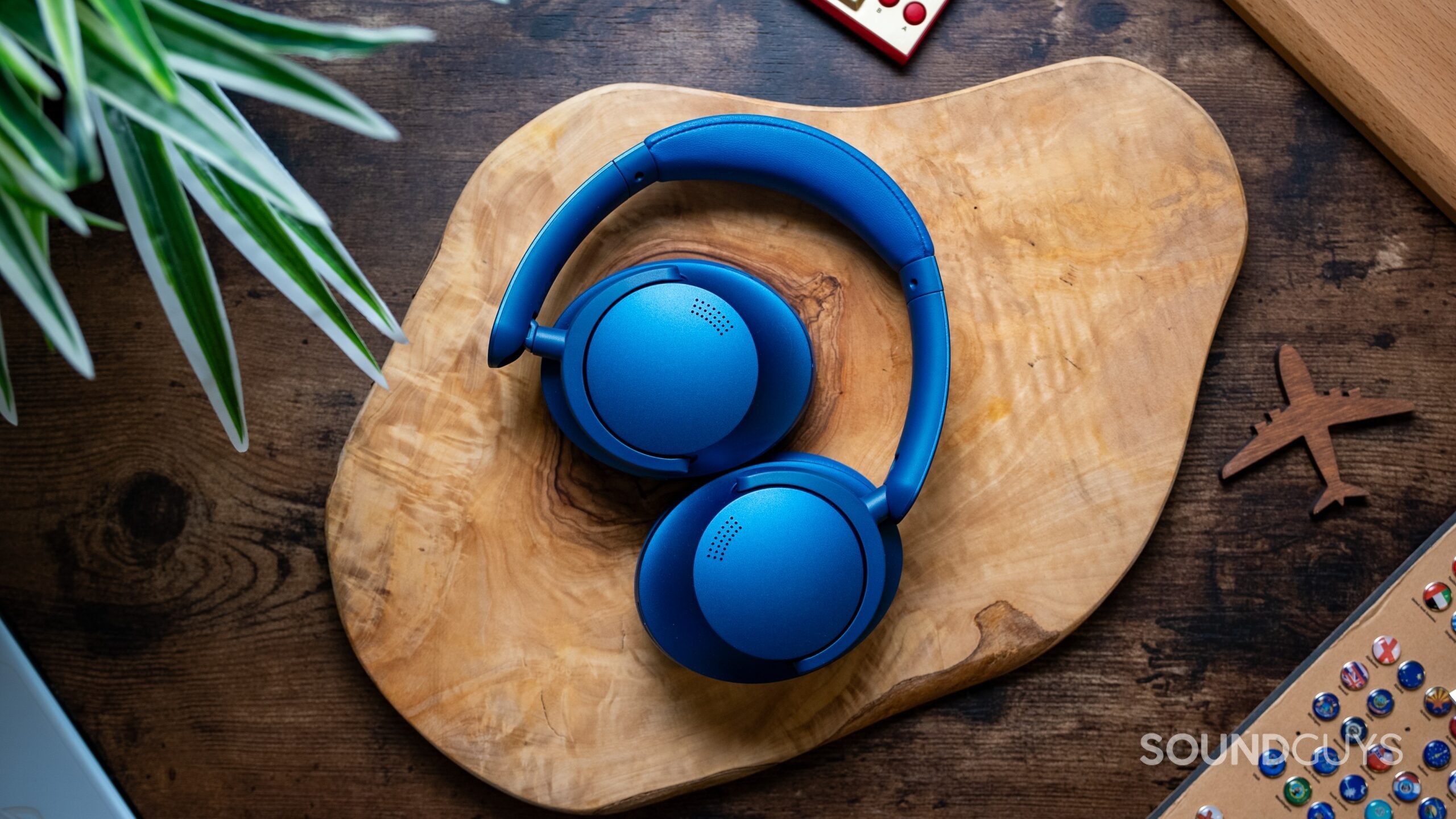
Coming in at under $100 with a feature-rich and stylish design, the 1MORE SonoFlow headphones are a top contender in the over-ear active noise canceling (ANC) headphone market. The plush padding makes these very comfortable and lightweight to listen with throughout its 50 hours plus battery life.


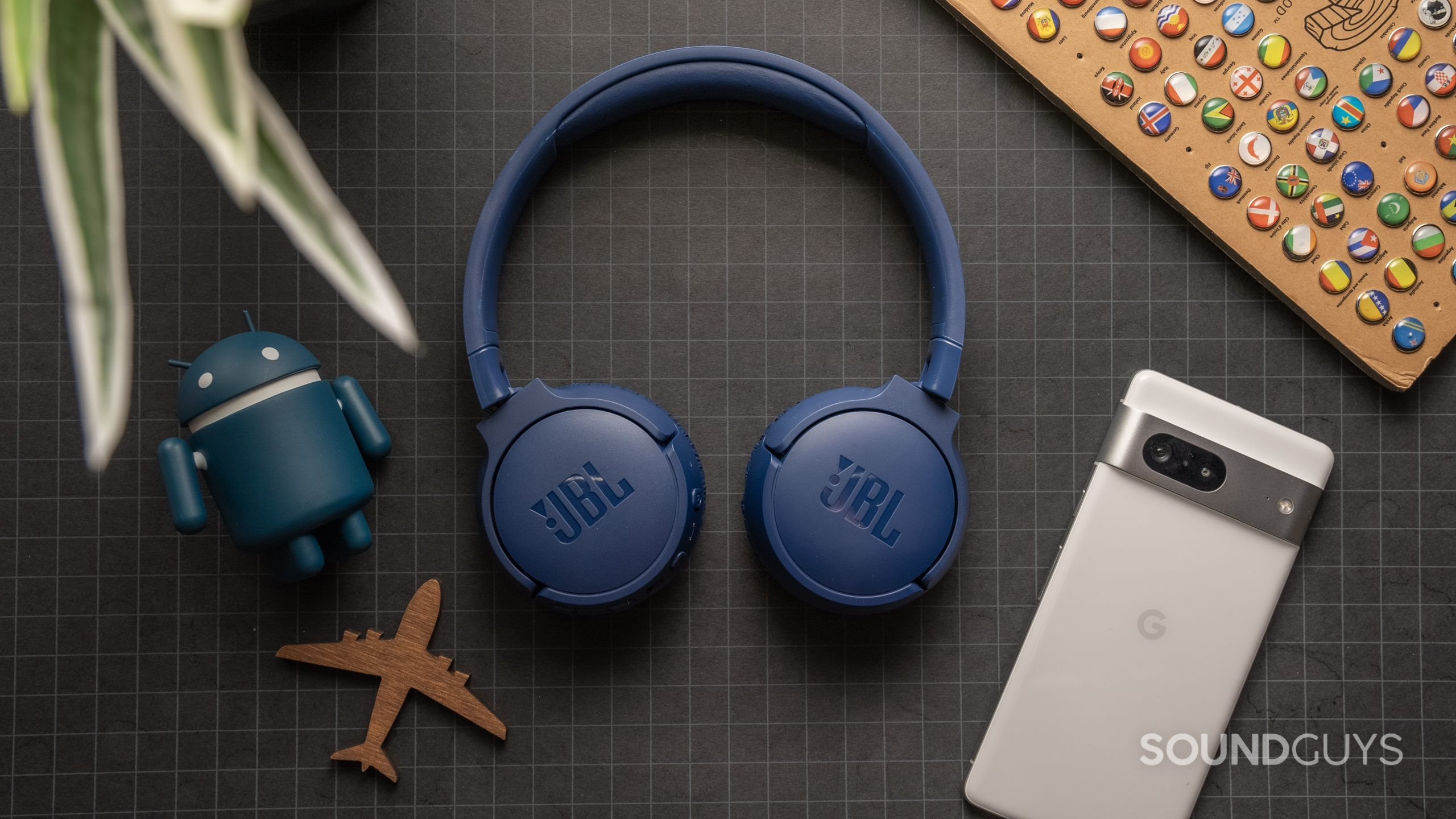
The JBL Tune 660NC is a great pair of high-value headphones despite bumping up against the upper limit of this list’s budget. In our review, we were pleasantly surprised to see how well the Tune 660NC blocked out low frequencies like a noisy dishwasher or car engine.
There’s no mobile app where you can equalize the sound, but luckily, they sound pretty good out of the box. Generally, the headphones’ frequency response closely follows our Target Curve, with a treble boost from 5-10kHz.
The headphones don’t support aptX, but you can stream over SBC or AAC. There’s also a headphone jack for wired playback. Battery life is impeccable: these headphones last 37 hours with ANC and up to 44 hours without. Fast charging is efficient, too — just five minutes of charging provides two hours of playtime. We think you’ll love the Tune 660NC.

Get the AKG K371 for studio and daily listening
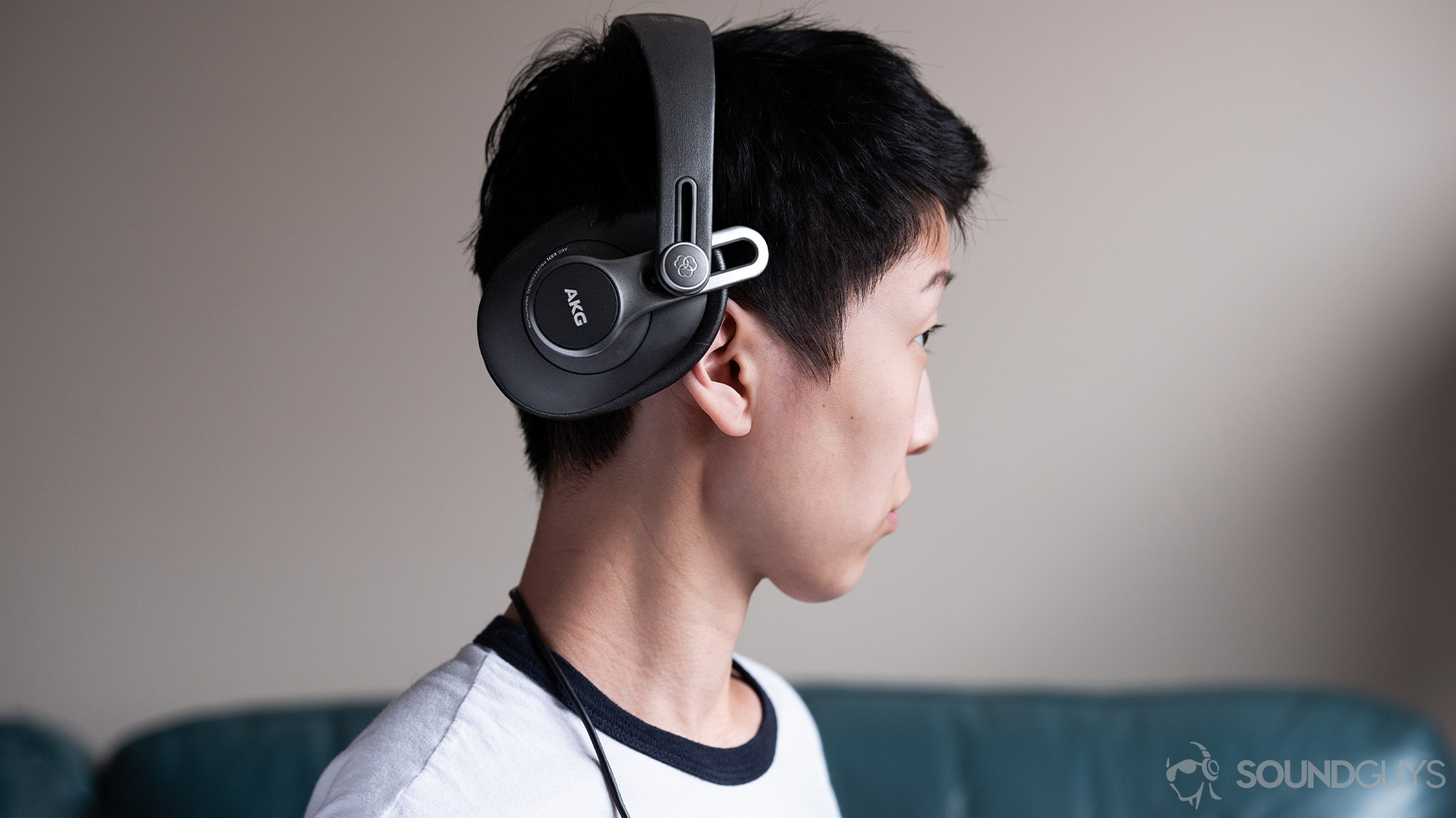
The AKG K371 originally retailed for $179 but can be found as low as $109. While this is still pricy, you get plenty of sonic bang for your buck. Sound quality is excellent and closely follows our house curve for consumer audio products. As a disclaimer, the reason this is one of the best-sounding headphones under $200 isn’t that it has the most neutral frequency response. Rather, it’s the best because it transitions listeners from the world of consumer audio to hi-fi audio. Some may balk at the bass and treble emphasis, but AKG casts a wide net, pleasing a majority of listeners.
With a slightly under-emphasized midrange, the K371 follows the sound of most modern headphones. You may be skeptical of the rolling peaks and valleys charted in the treble range, but this is also typical of more premium consumer headsets. We’ve observed a similar response with Sennheiser headphones, too.
You can flip either headphone up while wearing the headset to hear your surroundings and pump up the crowd while DJing. This is also a great feature for having a quick conversation with anyone nearby. AKG doesn’t provide a ton of accessories, but you do get a straight and coiled cable along with a 1/4-inch adapter and carrying pouch.
If you want to see some more products at this price level, head on over to our feature to see our selections for the best headphones under $200.

The best cheap headphones: Notable mentions
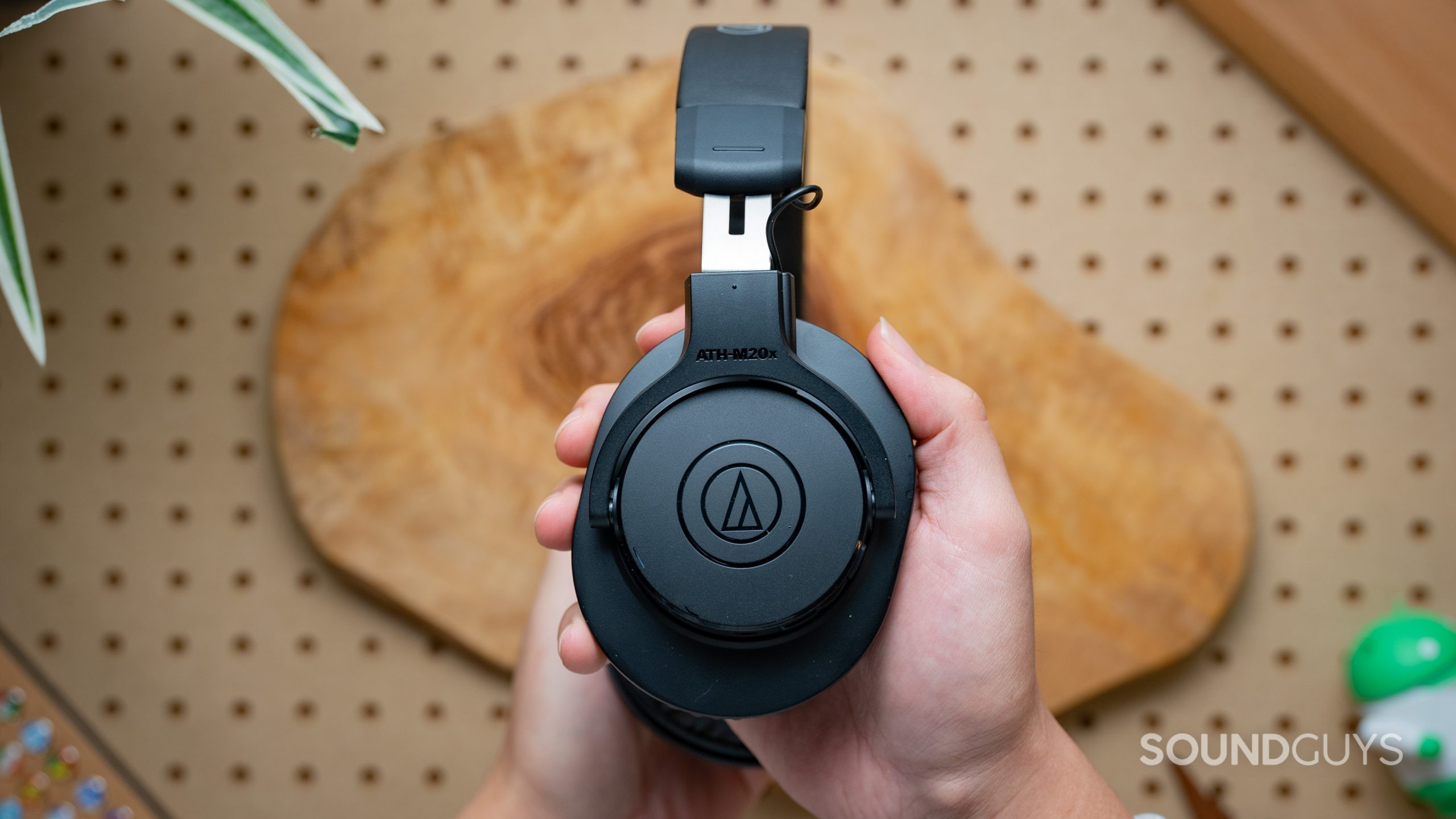
- 1More Sonoflow SE($54.99 at Amazon): These are packed with many of the same desirable features found on their more expensive counterpart, the 1MORE SonoFlow. While they likely won’t be your last set of over-ear headphones, they offer decent ANC and plenty of EQ options. Along with a comfortable fit and affordable price, they’re a good choice for any listener on a tight budget.
- Anker Soundcore Space Q45 ($149 at Amazon): Stretching the limits of what you might call “cheap,” this headset feels pretty premium with LDAC codec support, Bluetooth 5.3, and a long battery life with okay ANC. Its sound hampers the Q45 from the Best list.
- Audio-Technica ATH-M20xBT ($79 at Amazon): For the person who favors a less overly hyped sound but also wants the flexibility of Bluetooth or wired listening, you’d be hard-pressed to find another to fit this niche.
- Beyerdynamic DT 240 PRO ($67 at Amazon): Maybe you really liked our description of the Audio-Technica ATH-M40x but didn’t like the look of the headphones. Well, the Beyerdynamic DT 240 Pro is the answer to your sleek studio headphone desires. It’s comparable to the ATH-M40x in nearly every way, but this is a slimmed-down, on-ear version.
- Edifier W820NB Plus ($69.99 at Amazon): The Edifier W820NB Plus offers a comfortable fit, decent sound, and plenty of features for the casual listener on a budget.
- Grado SR60x ($99 at Amazon): If you want a smaller set of open-back cans, this builds off the back of a legendary pair of headphones at an entry-level price.
- JBL Tune 510BT ($27.99 at Walmart): These are one of the more compact and lightweight JBL headphones, but you do get two premium features: Bluetooth multipoint and long battery life. The former works reliably, which can’t be said of all products. Battery life is impressive and lasts nearly 41 hours, plus you get fast charging (five minutes yields 120 minutes of playtime). If you don’t need anything fancy but want something reliable, get this.
- JBL Tune 500 ($29 at Amazon): It’s a bit light on bass, but it has enough at 100Hz that you’ll still hear the kick drum. For just listening around the house, it’s not bad at all for the price.
- Koss Porta Pro ($59 at Amazon): The nostalgic crowd loves this portable pair of headphones. If you don’t want to overspend, this is a great option that goes on sale. The headphones are semi-open, though, so despite the portable build, they won’t sound the best while commuting.
- Marshall Major IV ($116 at Amazon): As both a wired and wireless on-ear headphones solution, it’s unique with a somewhat hyped bass and treble sound. It’s surprisingly comfortable for on-ear headphones. Don’t expect much isolation, though.
- Monoprice BT-600ANC ($84.99 at Amazon): If noise cancelation is the priority, these are excellent, especially for the price. Low-frequency noises are quieted to sound anywhere from one-quarter to one-eighth as loud as they’d sound without the headset on. Unfortunately, the frequency response is a bit wonky, so you’ll want a third-party EQ app.
- Sennheiser x Drop HD 58X Jubilee ($149 at Drop): This could have taken a spot on our list if it wasn’t for the sporadic availability. But if your main concern is sound quality, this is worth picking up.
- Sennheiser HD 280 Pro ($87 at Amazon): Marketed as a studio headphones solution, the HD 280 Pro sounds pretty good with a little more bass than most studio headphones. It’s pretty plasticky but gets the job done.
What you should know about the best cheap headphones
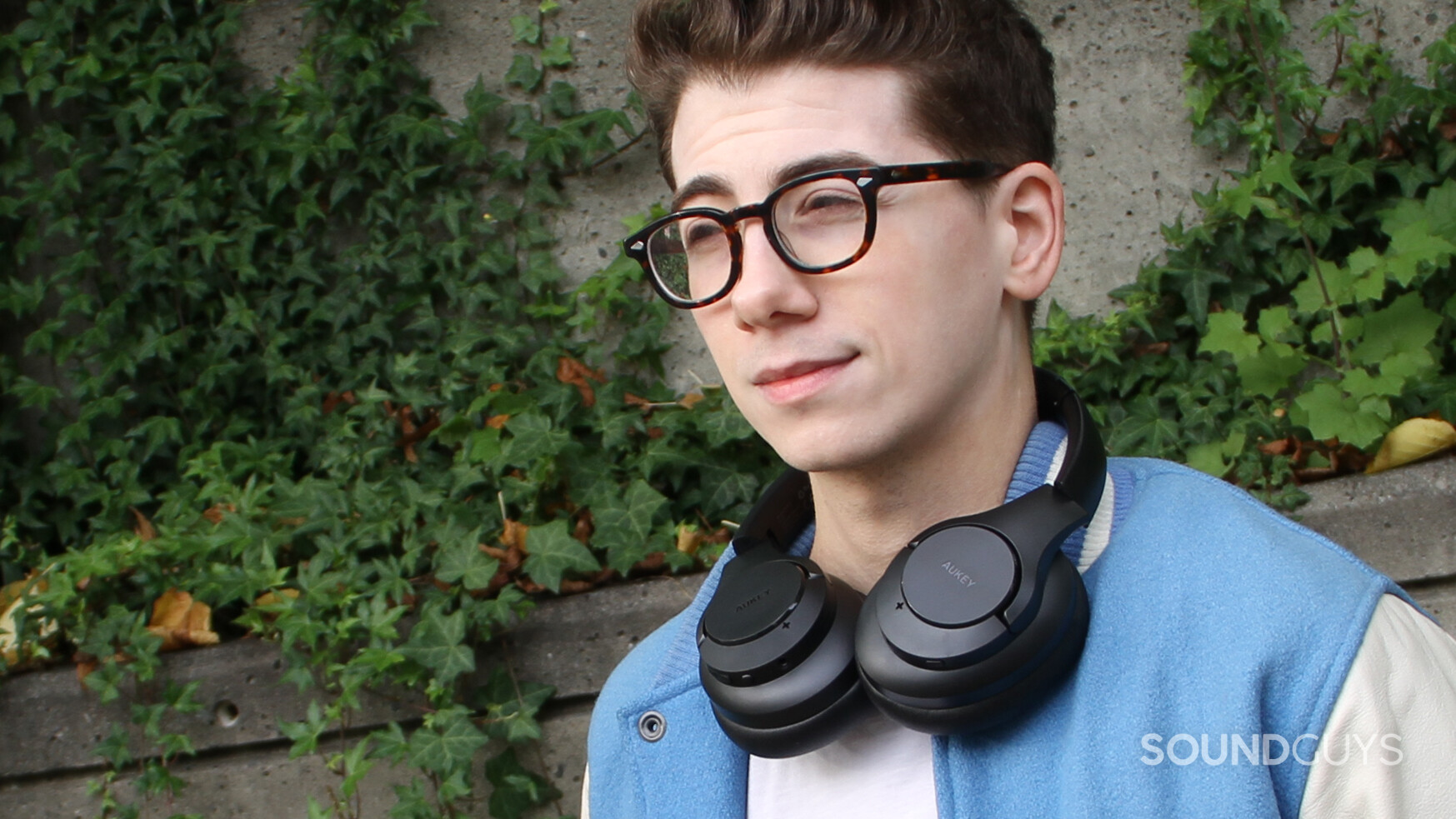
Something to ask when looking for cheap headphones: What can you do without? Most folks are in the habit of looking for “the best” — heck, we have a scoring system and many articles outlining the very best — but you’re not going to get flagship headphones cheaply. So, begin by whittling down your options and compromising on the luxuries you don’t necessarily need. For example, if you mainly listen to podcasts, you probably don’t need the most accurate sounding frequency response, but if you listen to those podcasts on a train, you probably do want some noise canceling.
Build quality is one of the first things you’ll sacrifice with cheap headphones. That doesn’t mean that all or any of these products are particularly prone to breakage, but it does mean that they lack premium materials.
Look for headphones that satisfy the essential qualities that make sense for your needs, rather than chasing features you don't need.
Additionally, with most cheap headphones, what you buy is what you get, but this can be a good thing. There aren’t any frivolities accompanying your purchase. You’re not getting any celebrity endorsement marketing or especially fancy carrying cases. Your purchase doesn’t rely on gimmicks. The Jabra Elite 45h has custom EQ capabilities, a premium feature unavailable on some of the priciest headphones out there, so you do get something. Still, you’re not getting everything in one package.
Hardware features aren’t going to be especially apparent, either. For instance, some headphones receive water-resistant treatment, but cheap ones rarely do. That’s fine since we’ve gone decades without it, but it does mean that you’ll have to be more careful with your cheap headphones, especially around water. Moreover, the passive isolation will be less effective with these picks than with something like the Sony WH-1000XM5, which is outfitted with top-end dampening materials.
Have fun with your cheap headphones
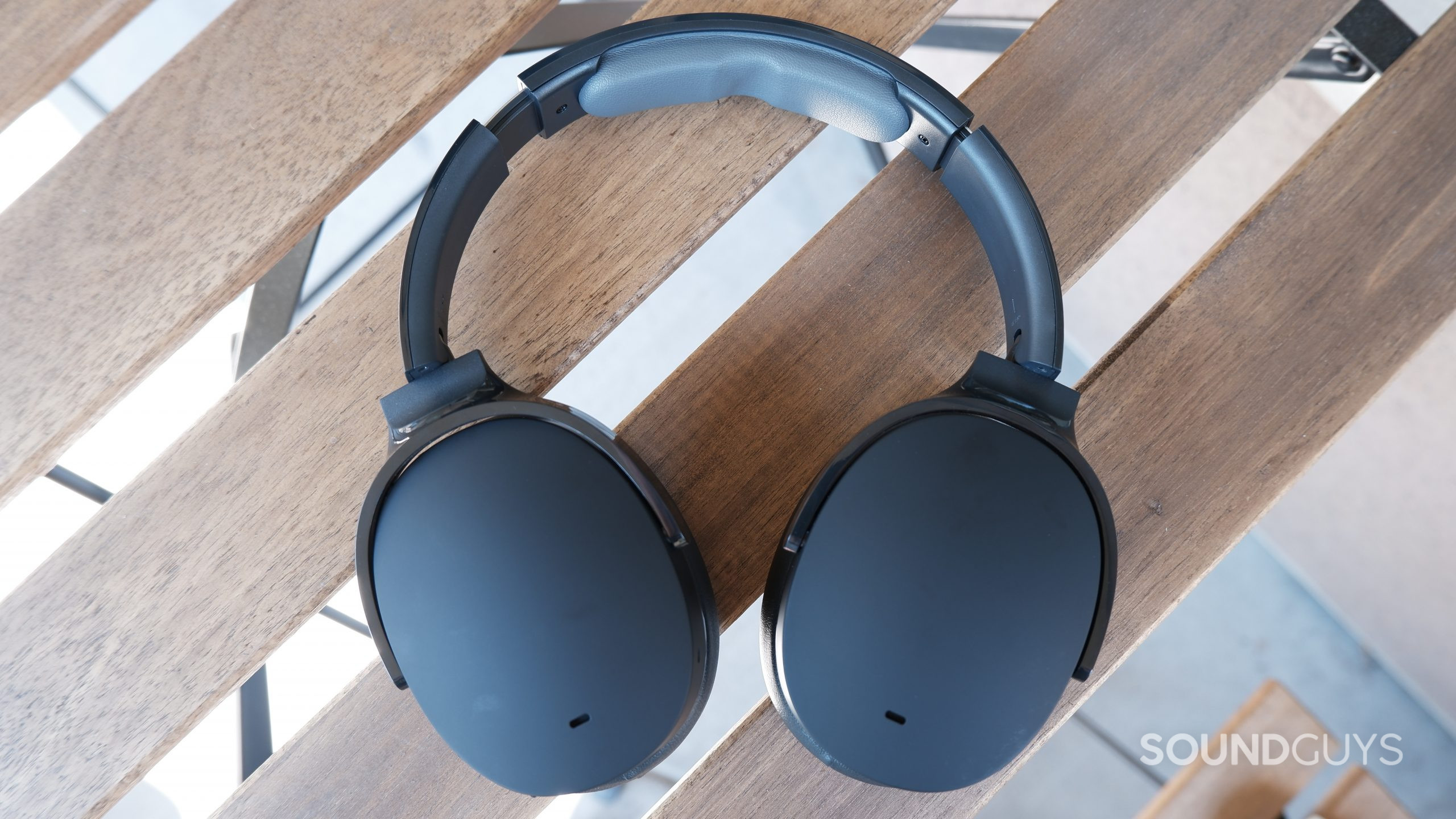
It may sound like we’re saying you can’t get good headphones for cheap, and it’s going to be all about compromise, but there are upsides. Getting cheap headphones means you don’t necessarily have to break the bank to try a new-to-you brand or a type of headphones you’ve not had before. Maybe you want a pair of super bassy headphones to compliment your collection, then pick something cheap and full of low-end emphasis.
You can take these headphones on your travels and not concern yourself with pampering them as you might with pricey headphones. Not to suggest your headphones are meant to be disposable, but whatever you choose does not have to be the last set of headphones you ever try, so don’t fret and have fun with it.
If you like the idea of cheap headphones but want something a little more compact and portable, check out our list of the best true wireless earbuds under $50.
What does frequency response even mean?
Loading chart ...
Another thing you should know is what we mean when we say “frequency response:” It just refers to which audible sounds the headphones emphasize. Some brands, like Beats, are known for heavy bass emphasis, while others go for a more accurate frequency response.
Are wired headphones really better than Bluetooth wireless headphones?
Yes, wired headphones transmit lossless audio, something that Bluetooth can’t yet do. While Bluetooth has come a long way since its inception, using it for audio data transfers thanks to Bluetooth codecs, it still isn’t up to snuff with a good old-fashioned pair of wired headphones. If you stream from Spotify or YouTube Music, you might not notice a huge difference.
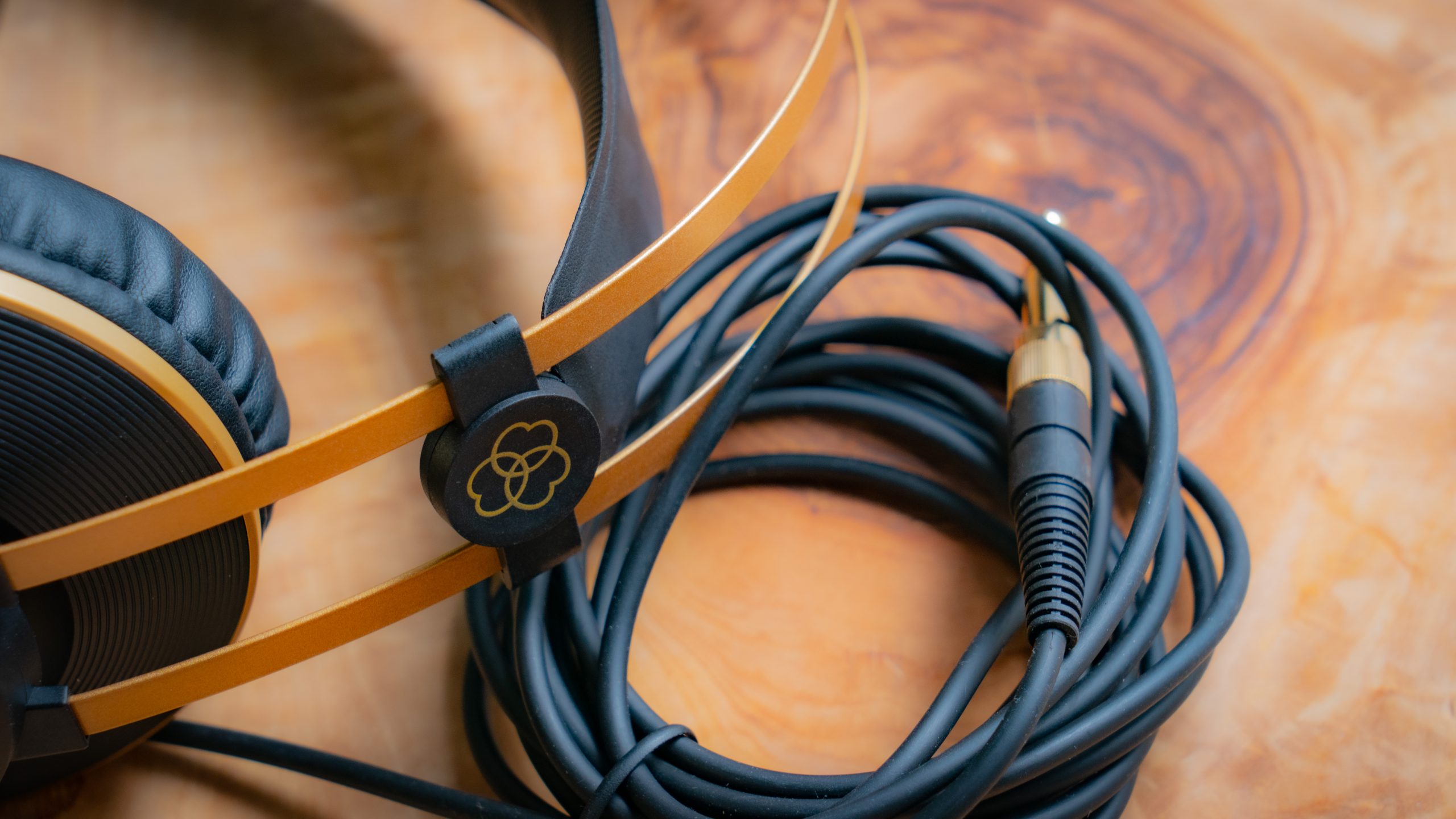
The simple thing to remember if you operate in the iOS universe is that you want the AAC Bluetooth codec. Every iPhone plays best with it and defaults to it when available. Android users can benefit from higher-quality codecs like aptX, aptX HD, and LDAC. Lastly, SBC is the lowest common denominator. The trouble for Android users is that cheap headphones are more likely to have AAC and SBC codecs and nothing else. Occasionally, this means Android users will probably encounter latency, whereas iPhone users don’t.
Bluetooth data transfer is capped off, and while that cap is sure to increase in the future as the tech gets better, wired headphones are just able to handle more. Of course, this is all technically speaking because chances are you wouldn’t be able to hear the difference in sound quality anyway unless you have perfectly trained, youthful ears.
Should you get on-ear or over-ear headphones?
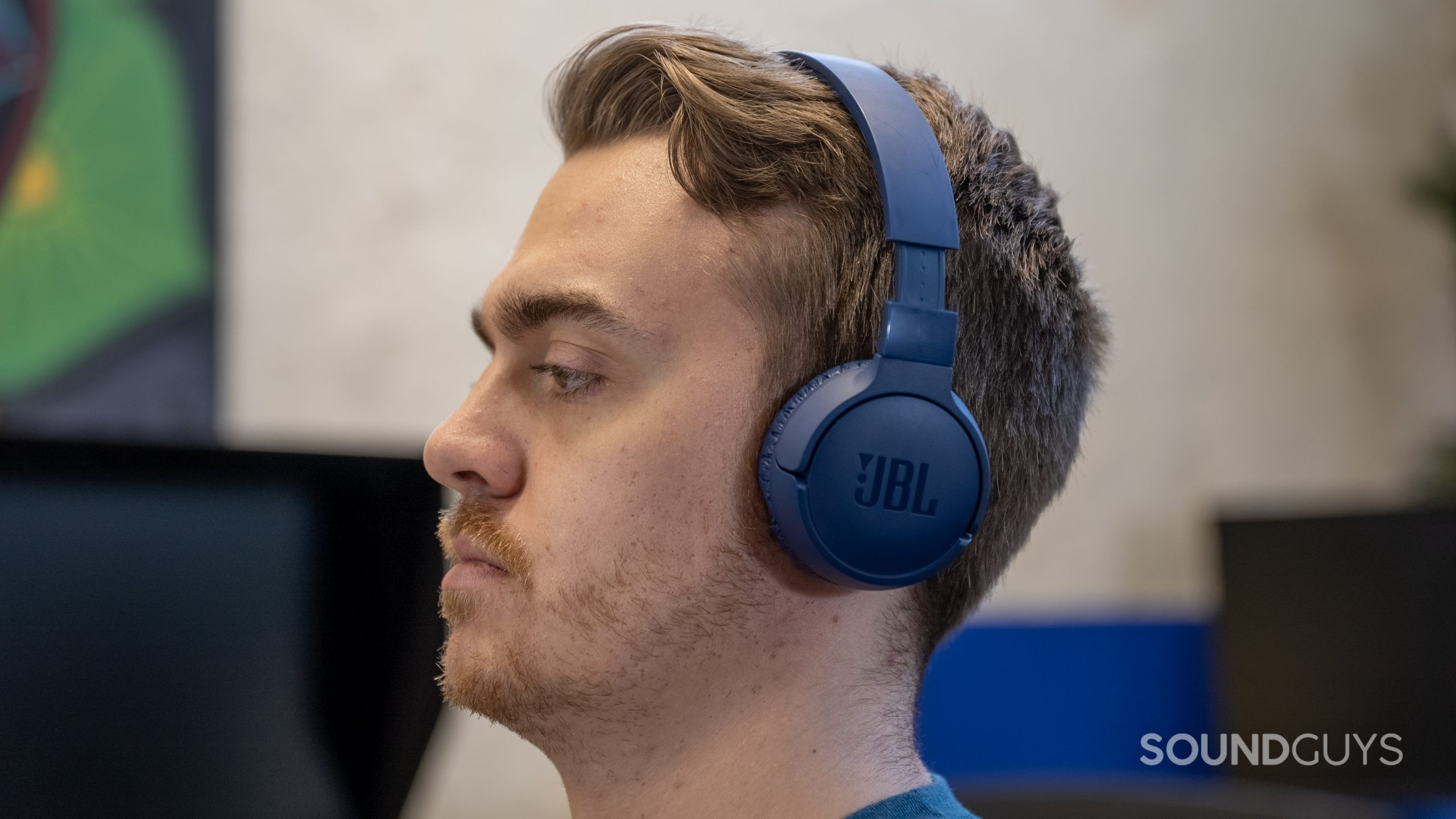
While it’s true that on-ear headphones typically are easier to stow away and portable thanks to their smaller size, they come with some concessions. For instance, while not universally true, as in the case of the nice fitting Grado SR60x and the Marshall Major IV, typically, on-ear headphones are less comfortable and exert greater clamping force than over-ear headphones. People with glasses will especially notice that when the on-ear headphones’ pressure pushes their ears against the arms of their glasses. Still, if comfort is important and so is portability, Koss figured that out with the Koss Porta Pro and its adjustable clamping force.
Additionally, by virtue of the on-ear headphones creating a seal by pressing the ear padding against your ear rather than around the ear, on-ear headphones provide worse isolation than their over-ear counterparts. Sure, some on-ear headphones have ANC, but you’re not going to get great overall noise canceling with on-ear headphones compared to over-ear headphones.
Why you should trust SoundGuys

This site is each of our day jobs, and collectively, we have years of experience in the audio industry. None of our writers benefit from pushing readers in one direction or the other; all we want is to arm you with as much knowledge about a potential purchase. Ultimately, we want you to be happy.
Our site does make money from referrals, but writers are paid for our research and writing, not if someone did or didn’t click a “buy button.” The only way we know we’re doing a good job is because… well, we still have jobs.
How we choose the best cheap headphones
We’ve spent plenty of time with plenty of headphones but haven’t yet gotten around to all of them. However, we made sure that each item on this list was directly tested and reviewed by at least one staff member.
If a product made it on this list, well, it’s because we all feel that it’s the best in its class per category. We acknowledge that this list is an ever-changing document, so if you don’t see your favorite pair of headphones, get at us on Twitter (now X) and let us know what you think should make the list!
Frequently asked questions about cheap headphones
It’s true sometimes you want something physically smaller like earbuds, so here are our picks for cheap noise canceling earbuds. Some of our headphone picks include noise canceling, like the Monoprice BT-600ANC and Anker Soundcore Life Q20. If noise canceling is your main criterion, we have some selections. That should get you started.
While headphones can range from as low as $20 to several hundred, $200 is considered a mid-range price. You can find some of the best-sounding headphones under $200, like the AKG K371, which offers a transition from consumer audio to hi-fi audio.
The Audio-Technica ATH-M40x is a standout choice for under $100. Designed with functionality in mind, it offers a sound profile suitable for various music genres and mixing, making it a favorite for both enthusiasts and professionals.
The Anker Soundcore Life Q20 stands out in this category. Priced under $60, it offers decent active noise canceling, comfortable wear for extended listening, and an impressive battery life of over 51 hours with ANC on.
Yes, even budget noise canceling headphones can be effective. For instance, the Anker Soundcore Life Q20, priced under $60, offers commendable noise canceling, especially considering its price point. However, while they can reduce low-frequency noises, they might not be as effective as their pricier counterparts.